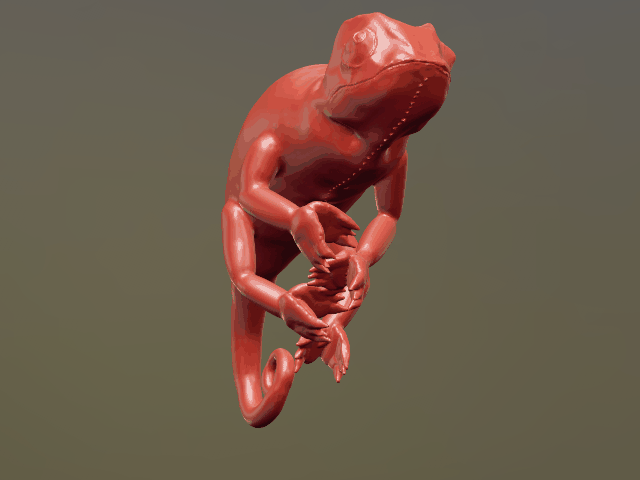Hello, I’m Félix Lapointe, a UX designer from Quebec City, Canada. You can browse some of my work portfolio, or just scroll down the blog for some of my experiments.
Blog tags: 💽 The Archives Project 🏗️ UX 🎨 Illustration ✨ Renders 🕶 Random All
One last batch of chameleons
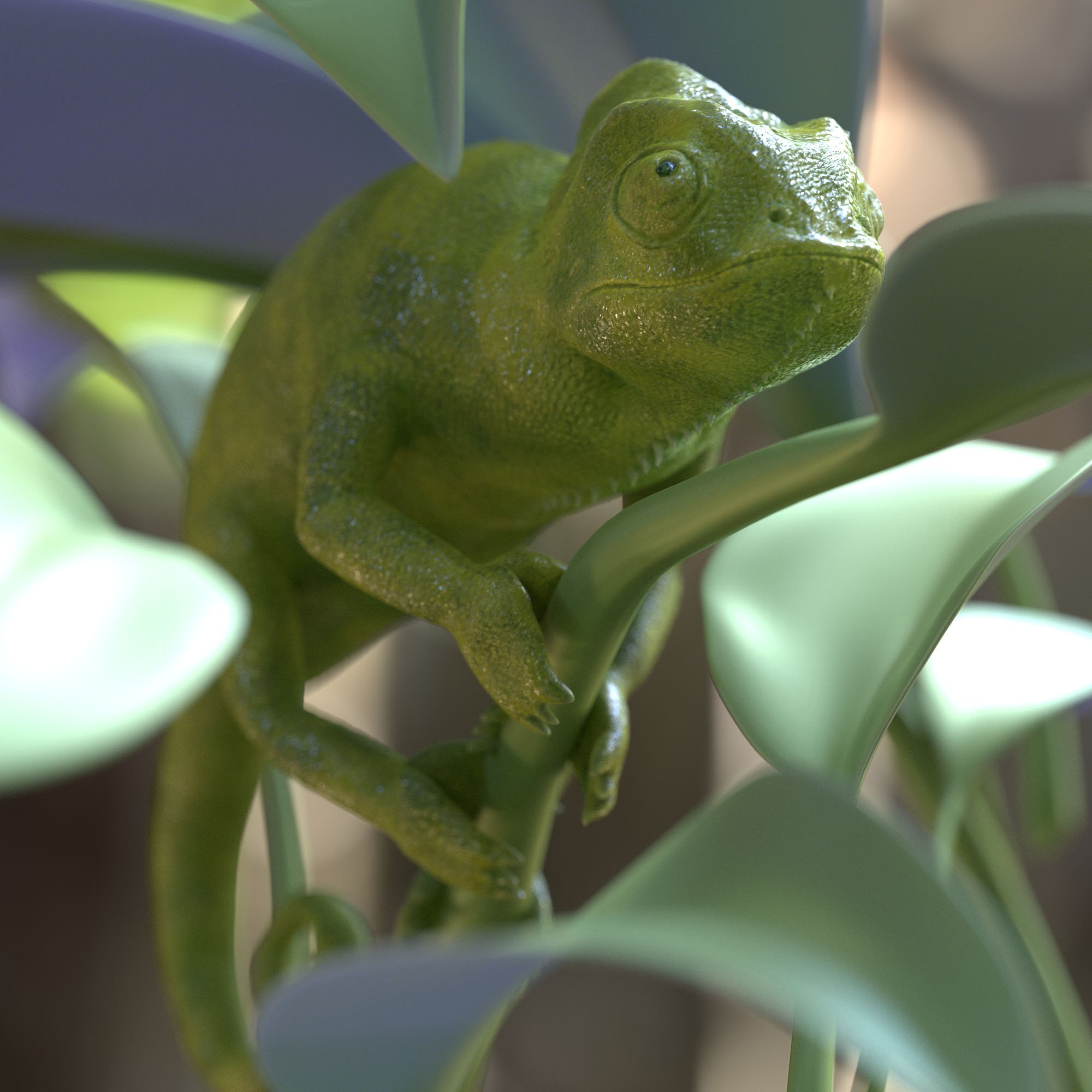
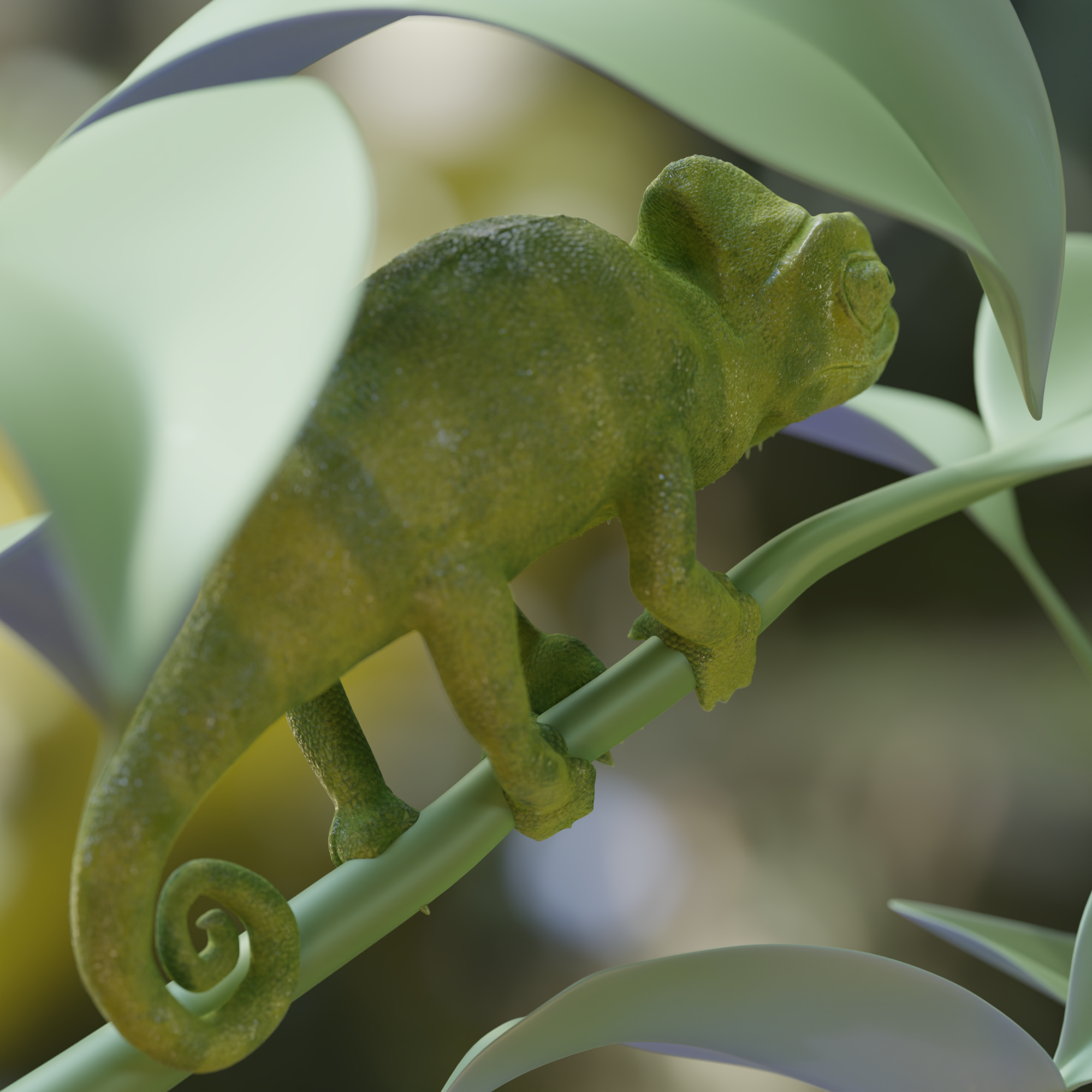
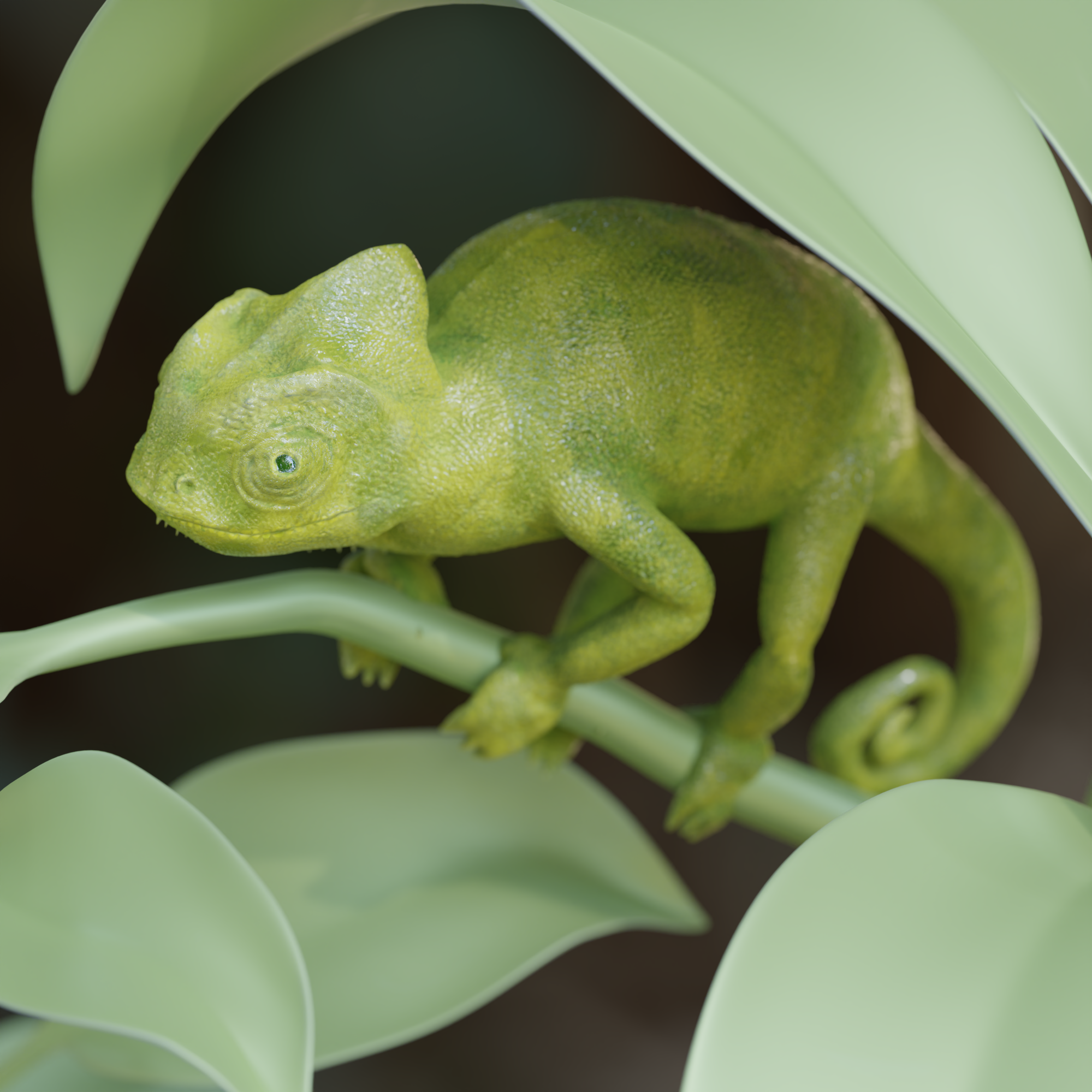
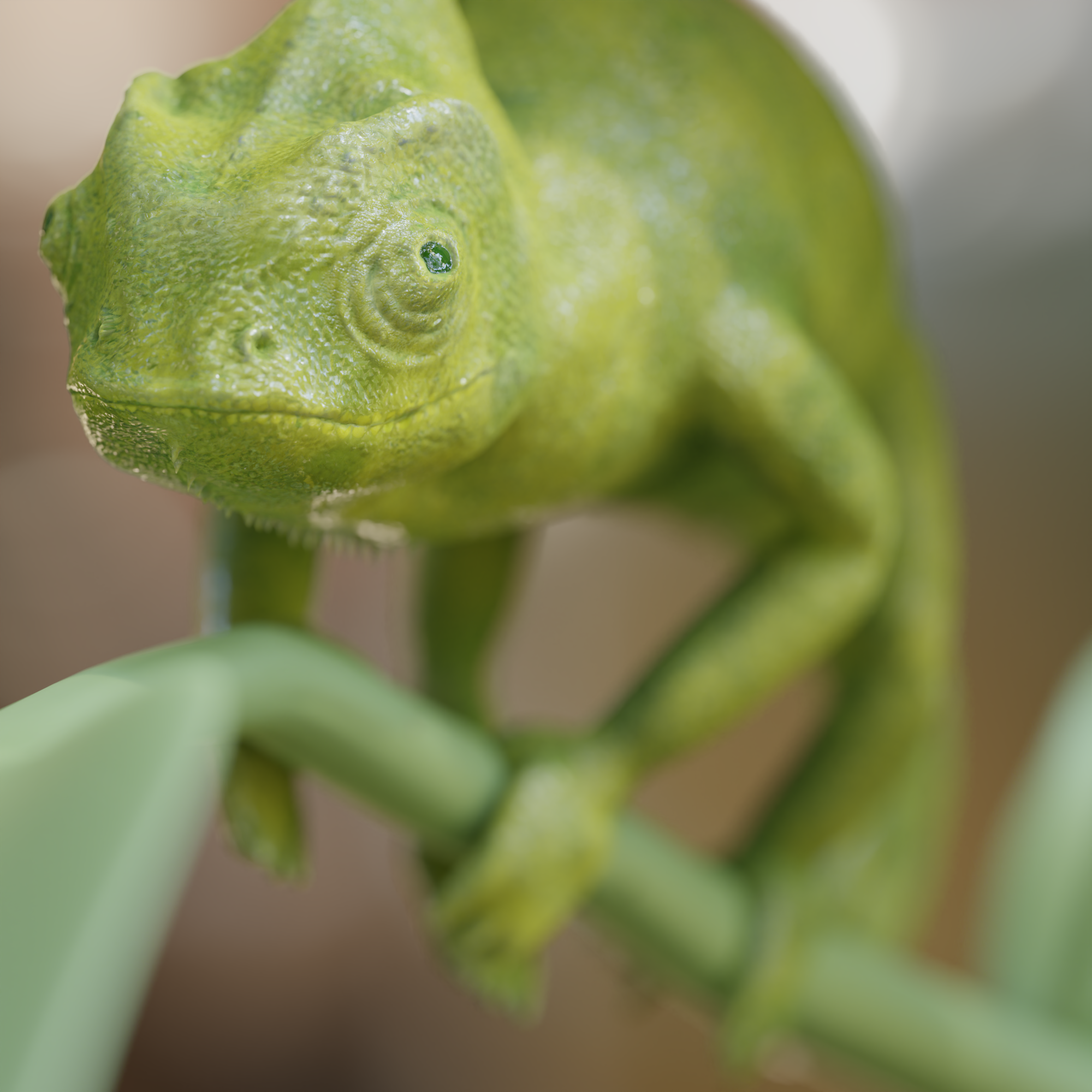
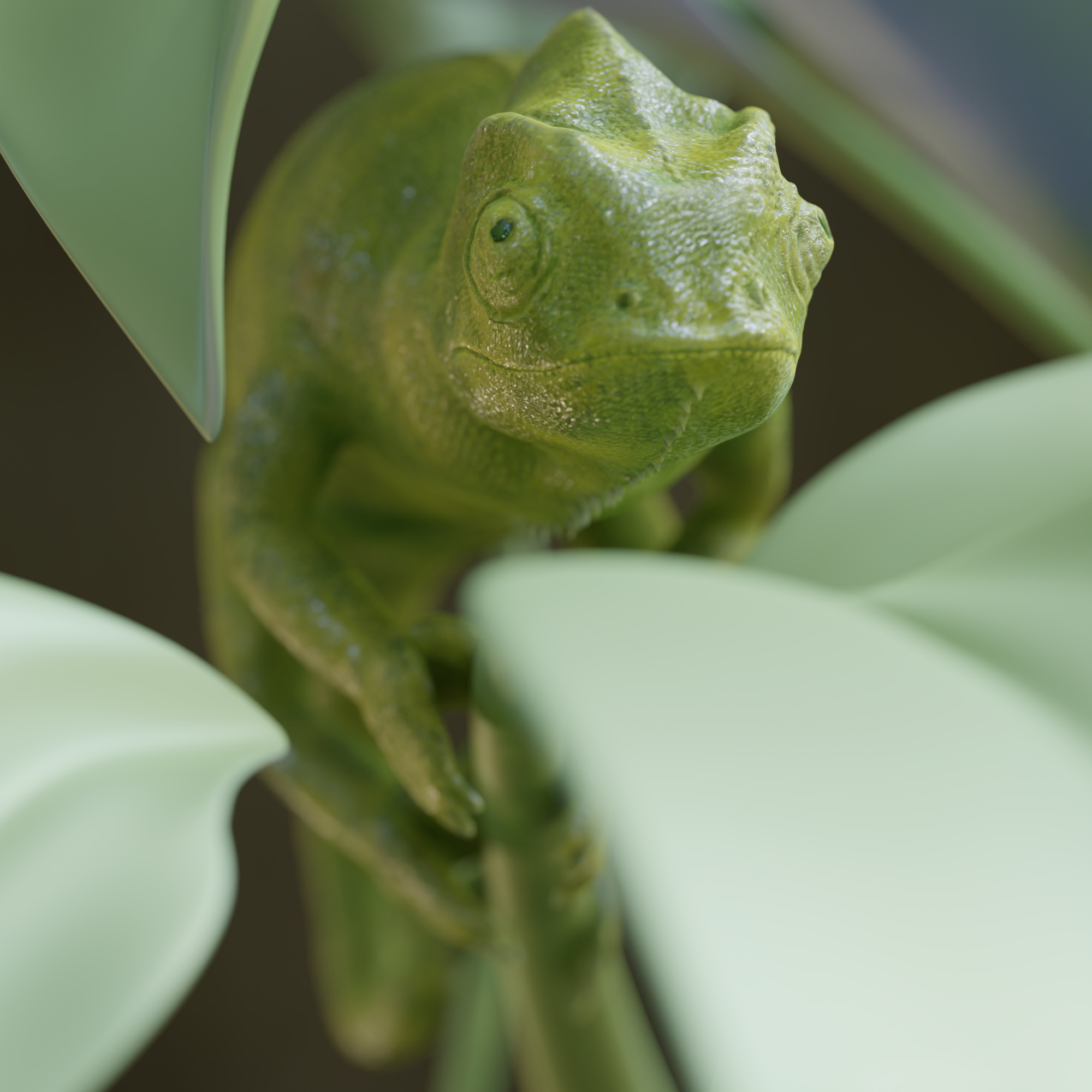
Before moving on to my next project, I spent the weekend rendering a number of images using my chameleon model. It took a bit more than 5 hours to render each image on my 2018 MacBook Pro. I am planning to experiment with Quixel Mixer next.
Procreate 5.2 3D texture painting nonsense
Using an iPad, I recently added random brush strokes to a self-portrait model and was pleasantly surprised at how easy it was. The simple iPad app was able to achieve the desired effect without being too heavy or complicated to use. There are certainly more powerful tools available, like Substance Painter. I'm amazed at how much you can do right on an iPad these days, and I'm excited to explore its capabilities. Overall, I had a great time using this app, and I'm eager to use it again.
Adobe Aero
AR is still a novelty for me, I don’t particularly like hunting Pokémons or placing a virtual IKEA sofa in my place. But I really enjoyed discovering that I can easily place my own 3D models with AR using the very easy to use Adobe Aero for iPad!
Adobe Aero is a mobile application that allows users to create and publish augmented reality (AR) experiences. It is available for both iOS and Android devices.
One of the features of Adobe Aero is the ability to place 3D models in the real world using AR. This can be done by importing a 3D model from a file or by creating one using the 3D modeling tools available in the app. Once the model is imported or created, the user can place it in the real world by using their device's camera to scan the environment and anchor the model to a specific location.
Using Adobe Aero, users can easily create immersive AR experiences that blend the digital and physical worlds. This can be useful for a variety of purposes, including education, entertainment, and marketing.
Sculpting a self-portrait
One of the most important aspects of creating a self-portrait is achieving a realistic and accurate representation of oneself. To do this, I used three reference photos of myself as a guide while working in Nomad Sculpt, a digital sculpting tool. I used these photos to match the proportions of my face as closely as possible in my digital self-portrait. While the final result may appear a bit "plasticky," I believe that it still resembles me.
Pandemic crafts
Prior to rediscovering 3D modeling and texturing, the boredom and free time brought by the pandemic made me do some arts & crafts with my son, with a focus on longer, multi sessions projects. We sculpted mainly with Crayola Model Magic and painted with acrylics. I think it really help me figure out 3D volumes better and develop more patience with longer 3D projects. Some kneaded bread, I kneaded Model Magic!
Refining the render settings and material options
This is an updated version of my chameleon sculpt, with some adjustments to the materials and render options. I am pleased with the camera blur and the new lighting that I added. I used an HDRI lighting image from the very useful Polyhaven website.
A High Dynamic Range Image (HDRI) is a type of image that contains a much wider range of luminance values than a standard digital image. This allows it to capture a greater range of lighting conditions and provide more accurate and realistic lighting in 3D computer graphics. HDRI lighting images can be used as a source of lighting in 3D software such as Blender or 3ds Max, allowing the user to create more realistic and lifelike lighting environments.
Getting acquainted with Blender materials
I can now somewhat setup my Substance textures in Blender but the subsurface scattering is way too strong!
Subsurface scattering is a technique used to simulate the way light is scattered when it enters a translucent or semi-translucent material and is absorbed, scattered, and reflected inside the material before being transmitted back out. This technique is often used in computer graphics to create more realistic and lifelike rendering of materials such as skin, wax, and marble.
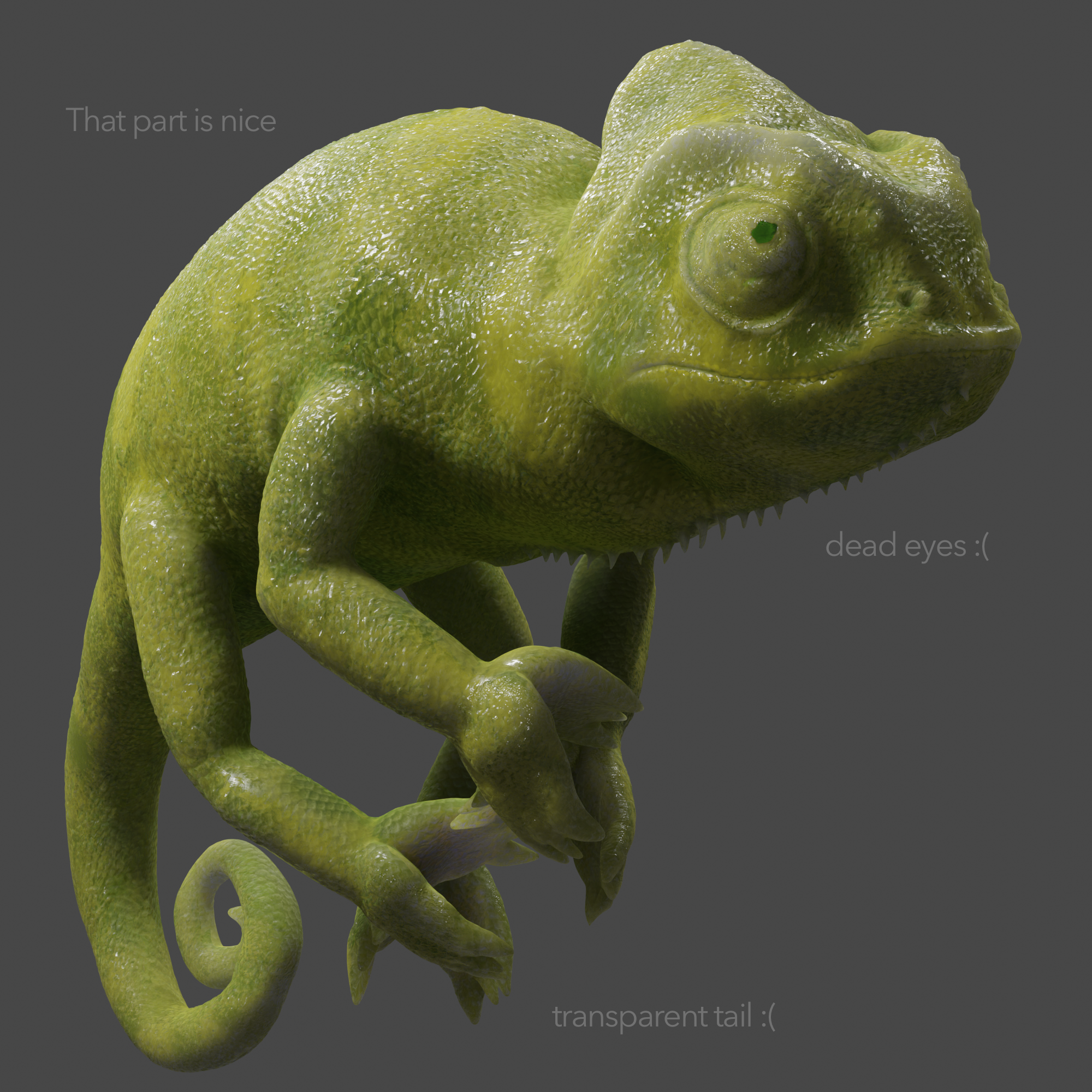
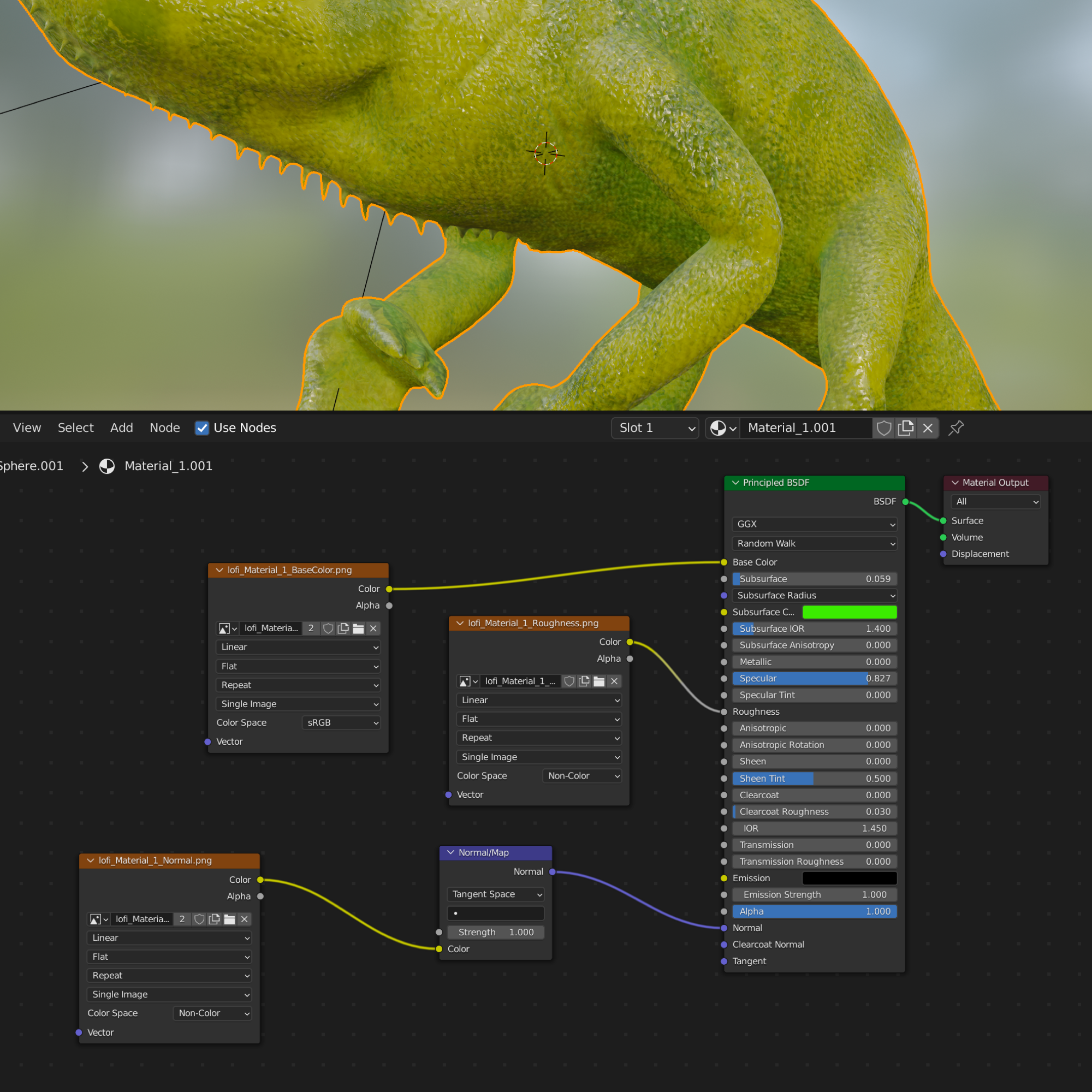
Trying an etching style
I have been wanting to try my hand at creating an illustration using an etching style for some time now. So, I decided to give it a go and create a self portrait using this style. Here is the result.
Blender user interface rant
As a UX designer, I both appreciate and critique the user interface of Blender, a 3D computer graphics software. One aspect that stands out to me is the fact that Blender presents all of its complexity to the user at all times. As a humorous thought experiment, I have wondered what it would be like if the UX designers at Blender were to design a refrigerator. This is a tongue-in-cheek reference to the "refrigerator chapter" in the book “The design of everyday things” by Don Norman, which discusses the importance of intuitive and user-friendly design in everyday objects.
Textured Chameleon
I used to work with 3DS Max and SoftImage XSI 20 years ago, but at the time, I never really understood UV unwrapping and applying materials. With Blender, I finally got a hang of the UV stuff and with Substance Painter, I got -somewhat- the result I hoped for.
Sculpting a chameleon
I have now clocked a lot of flight hours in Nomad Sculpt, here is a work in progress turntable of a chameleon I’m sculpting.
The most fun you can have with $20 and an iPad
During the holidays, I spent a lot of time playing with this iPad app called Nomad Sculpt (available on the App Store). It’s a very feature rich sculpting software akin to ZBrush, but it’s easier to learn and made for the iPad and the Apple Pencil. Here are some creations I did so far. I really enjoy this and I expect to do a lot more with it!
During the holidays, I spent a lot of time playing with this iPad app called Nomad Sculpt (available on the App Store). It’s a powerful sculpting software that is similar to ZBrush, but it is designed specifically for use on the iPad with the Apple Pencil. It is known for its wide range of features and is generally considered to be easier to learn than other sculpting software. I have enjoyed using Nomad Sculpt to create some digital sculptures, and I expect to continue using it in the future. Here are some examples of my work so far.
"The" donut tutorial
BlenderGuru, the friendly Australian/Blender master, recently released his third iteration of his infamous “Donut tutorial” series. I attempted (and failed) to follow the previous two efforts, but the difference this time is Blender version 3.0 While the learning curve is still incredibly high, the interface is much cleaner. Here is MY donut!
BlenderGuru, the friendly Australian/Blender master, recently released his third iteration of his infamous “Donut tutorial” series. I attempted (and failed) to follow the previous two efforts, but the difference this time is Blender version 3.0 While the learning curve is still incredibly high, the interface is much cleaner. Here is MY donut!










